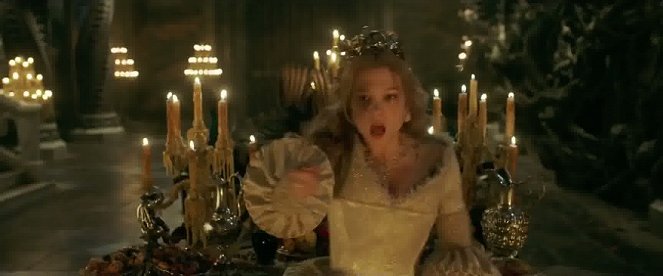Ohjaus:
Christophe GansKuvaus:
Christophe BeaucarneSävellys:
Pierre AdenotNäyttelijät:
Vincent Cassel, Léa Seydoux, André Dussollier, Eduardo Noriega, Myriam Charleins, Audrey Lamy, Sara Giraudeau, Jonathan Demurger, Nicolas Gob (lisää)Suoratoistopalvelut (2)
Juonikuvaukset(1)
1810. Menetettyään omaisuutensa merillä puilla paljailla oleva kauppias joutuu vetäytymään maaseudulle kuuden lapsensa kanssa. Yksi lapsista on Belle, nuorin tytär, joka pursuaa elämäniloa ja suloisuutta. Raskaan matkan aikana kauppias kohtaa hirviön, joka tuomitsee miehen kuolemaan ruusun varastamisesta. Belle syyttää itseään perheensä ikävästä kohtalosta ja päättää uhrata oman henkensä isänsä sijaan. Hirviön linnassa Belleä ei odotakaan kuolema, vaan outo elämä täynnä taikaa, iloa ja melankoliaa. Joka ilta Belle ja hirviö syövät illallista. Vähä vähältä he alkavat luottaa toisiinsa kuin muukalaiset, joita maailma yrittää pitää erillään. Vaikka Belle torjuu hirviön lähestymisyritykset, hän myös yrittää selvittää hirviön ja tämän linnan salaisuudet. Öisin Bellen uniin tulee välähdyksiä hirviön menneisyydestä. Niiden traagisesta tarinasta hän oppii, että tämä hurja ja erakoitunut olio oli kerran komea prinssi. Vain rohkeus ja avoin sydän aseinaan hän voittaa vaarat. Hän murtaa hirviön kirouksen ja löytää aidon rakkauden. (Elokuvapalvelu J. Suomalainen)
(lisää)Arvostelut (2)
I truly don’t understand why France films so many remakes that have nothing to offer except for the actors. Purely because they attempt to film these classic themes in absolutely classic ways that someone’s already tried before and succeeded (since they were the first one to do it). Just off the top of my head, I can think of Fanfan la Tulipe or Angélique. This Beauty and the Beast hints at wanting to be different, but in the end, its fairytale-ness and its fantasy-ness don’t offer anything else other than a classic fairytale with a classic premise and a classic flow of storytelling. But Léa Seydoux has at least proved herself.
()
Gans understands me. That his version of the classic fairy tale would be a ticket to the deepest hell for most lovers of understated minimalism was clear from the first blow of the clapperboard, which itself had to be set so cleverly set that the clapper didn't blow away the hundreds of rose petals on the powdered artificial snow. And truly, it dangerously often leaps several kilometers across the boundaries of ultimate kitsch to somewhere in the vicinity of Thomas Kinkade. But given the fact that we have an alibi from the start that this is going to be a storybook illustration, and we'll learn at the end that it was probably the imagination of a simple country woman who likes her bearded husband and a garden full of roses, I can actually sit back and enjoy every hideously over-stylized shot, looking exactly as I imagined fairy-tale realms as a little tyke. Which perhaps makes me a closeted gay, because that rubber tree for artificial flowers was for this film a bridge too far.
()

